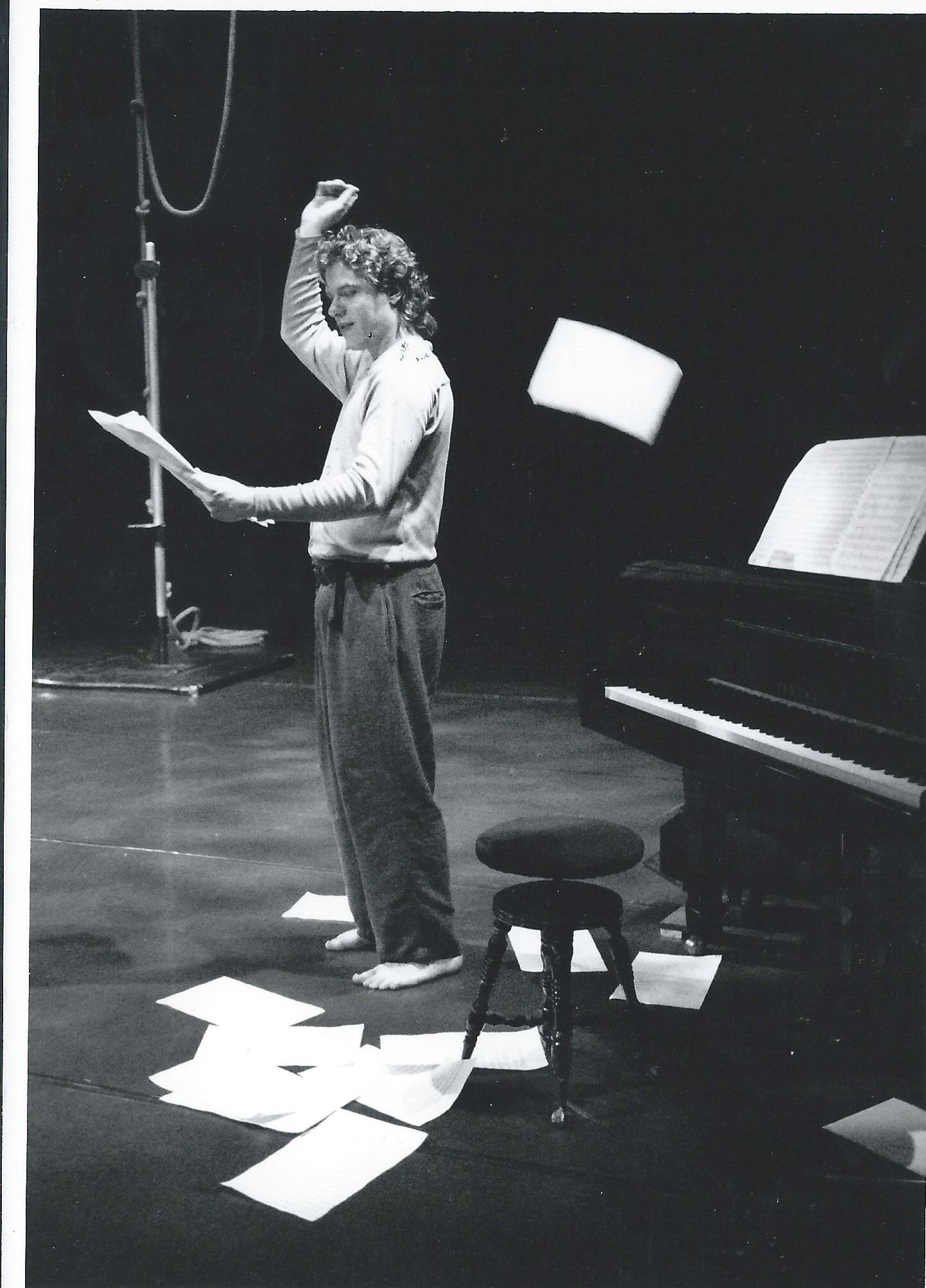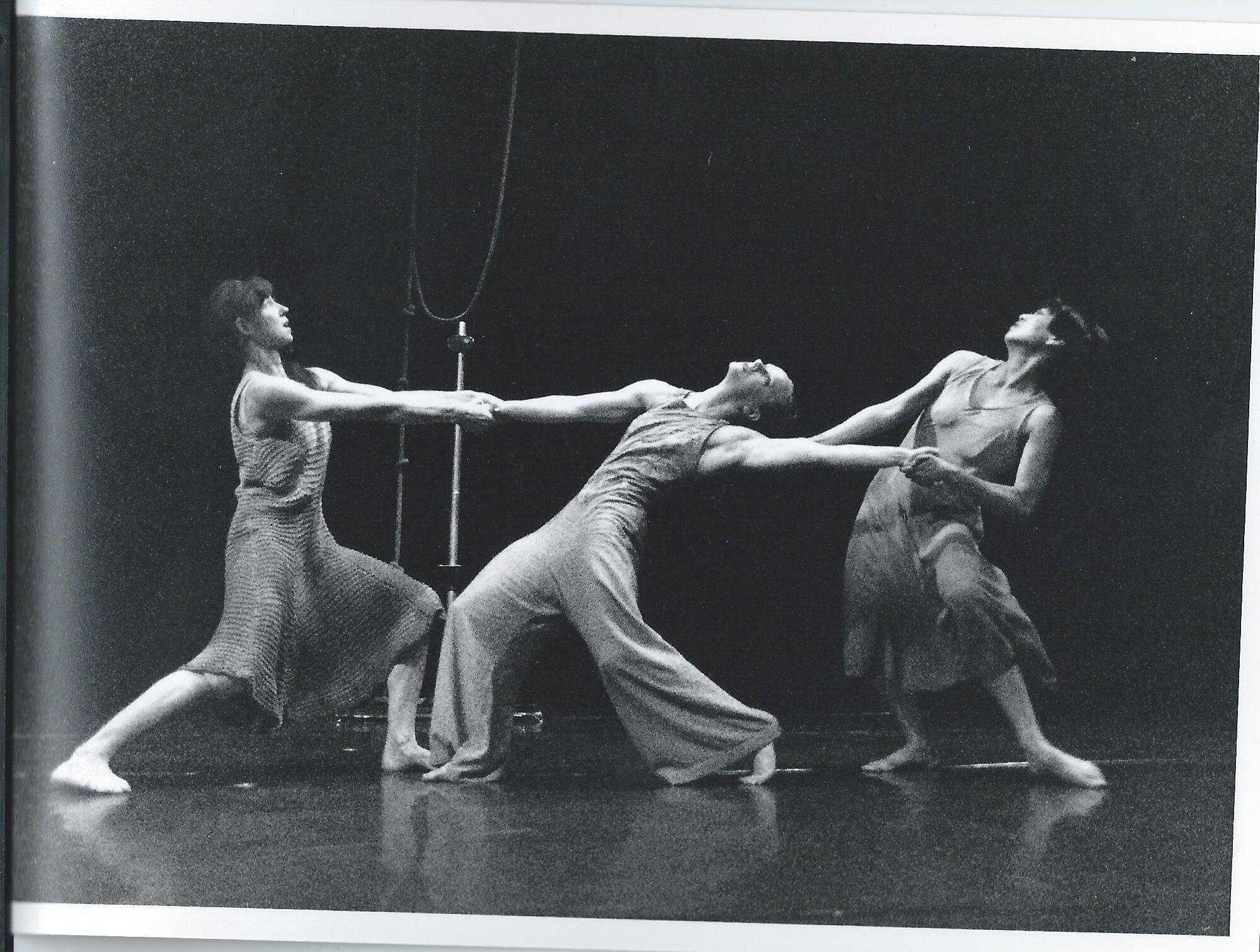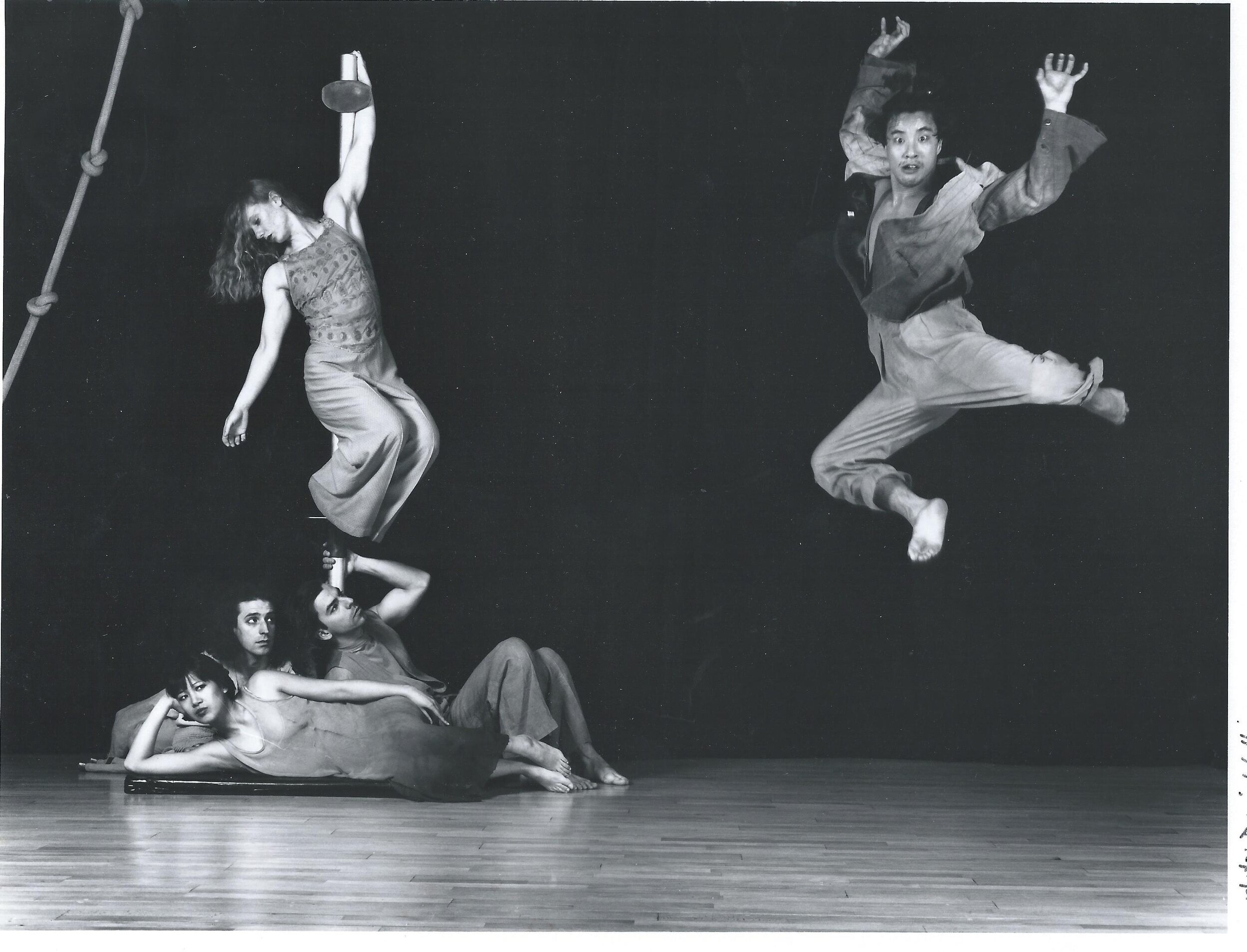Tales of Descent

Tales of Descent
1993
About
Tales of Descent follows the turbulent dialogue of a man and woman who, as creators of theatre are visited and transformed by the characters they create on the stage. Their descent into dream-play gives the fertile battleground between them shape, unleashing forces both creative and destructive.
In mythology, the “underworld” is a place of trials and torments through which a hero or heroine travels in order to be reborn with new knowledge and wisdom. Its undertaking is often voluntary and comes out of a profound need to find a part of oneself that has been lost, or to give over to a new life by the death of an old one. As a test of commitment, desire and faith – it is by its very nature a world where one loses what has previously been dear to him or her. In the Sumerian myth, for example, each level of Inanna’s descent is accompanied by the loss of a layer of clothing and jewellery. Like many mythologies of transformation, her eventual return to the heavens is only made possible after she has lost everything.
To navigate in such a world is no easy task. Those who were not “worthy,” would often succumb to its tortures. Even in alchemy, processes by which the soul could successfully transform (Unificato) were documented in cryptic manuals involving symbols and rituals intended to be indecipherable to all but those who possessed the necessary wisdom. In them they refer to the dissolving and reforming of the soul through such elemental processes as fire (Calcinato), water (Solutio), and air (Sublimato).
I believe the act of creation requires such a process. What the alchemists call “Unificato,” is in fact the union of opposites – the solar and the lunar. In Tales we trace the journey taken in the search and recognition of this union, and the source of one’s “other” through layers of cultural baggage, biases and judgements. It begins at the place of maximum impasse, where the alternative to creation is destruction and madness, and follows the thin line between them. The struggle to transcend becomes, for the man, a desire to give concrete form to the emotional landscape between them, and for the woman, the need to reconnect with the source of energy she calls the river. Their struggle is “named” by a company of archetypal characters – real, fictional and mythic – who seeing it as an opportunity for life, play out the conflict in a dreamscape of words, music and dance.
Each gives voice to a separate element in the conflict, at first delineating their affiliations into solar and lunar camps. The woman’s immediate affinity with the deposed God Snake confirms her role as Eve and is opposed by the solar ‘judge’ Saint Sebastian. The resulting despair is manifested by Marilyn, in whose pain is found need for transcendence. Meanwhile, the man’s increasing disconnectedness with the world, coupled with his alchemical obsession with creation and design earns him the name Faust. His fears are reflected in the story of Inanna, whose fall through the seven gates of the underworld to her eventual death/rebirth is sung by Hermes. At the same time, in violent reaction to his sense of entrapment, and aware of the futility of his own attempts to transcend, Icarus gives voice to Faust’s final doubts about his proposed death/rebirth scenario, warning him about the dangers of participating in such myths. In the last scene, Hermes tells the story of Penthius and the Bacchae, while Faust, recognizing his relationship to the world, is swept into its transformative energy.
- Jeff Corness
Programme, The Waterfront Theatre, May 20-June 5, 1993
Tales of Descent is a physical allegory about a journey to the underworld. A narrative of the transformative power of dreams and the cryptic truths they reveal. It is a dynamic narrative which explores the integration of dance and music for their potential to create a new theatrical language.
The story follows a man and woman who, as creators of theatre, are visited and transformed by the characters they create on the stage. The two engage in dialogues with these characters who in turn, through dance, theatrical ritual, storytelling and songs, weave a web of dreams, judgments, fears and desires that lure the two creators towards the substructures of their souls.
Eight characters perform using dance, song, and instruments, and are accompanied by taped, live and synthesized musical sources.
The Karen Jamieson Dance Company has been sharing with and learning from the performance traditions of the Northwest Coast Indigenous people for several years. This tradition uses a sophisticated integration of dance, music and storytelling. The KJDC has been inspired by their profound sense of rootedness which is developed by the direct connection of their art to a specific geographical place in the world. Tales of Descent marks the beginning of a new phase of the company in which both music and dance become equal partners to create a new physical theatre. It is also a search for a place of origin in the western cultural tradition.
- Press Release, February 2, 1993
Snake is a solo that was originally created as part of the evening-length work, but was developed and continued to be performed by Hiromoto Ida. Snake was one of 5 dances showcased at 5 Dances by Karen Jamieson in 1995, an evening of innovative dance and music collaboration exploring notions of gender, conflict, spirituality and compassion.
The People
Choreography: Karen Jamieson
Text and Music: Jeff Corness
Performers: Karen Jamieson as Eve, Jeff Corness as Dr. Faust, Kay Huang as Marilyn Monroe, Jud Martell as Icarus, Peter Hurst as Hermes, Andrew Olewine as St. Sebastian, Chantal Deeble as Inanna, and Hiromoto Ida as Mephisto
Costume Designer: Nancy Bryant
Lighting Designer: Gerald King
Photos: Daniel Collins
Reviews
“Karen Jamieson’s new work, Tales of Descent, is not a piece of dance you can watch in a conventional way. It’s a fast-flowing river you wade into, a stretch of water turbulent with ideas and innovation. Currents of myth from many cultures tug at the imagination. Music and text and movement stream past, bearing the viewer along in the strongest dance drama Vancouver has produced in a decade, maybe ever.
On the face of things, the collaboration between Jamieson and composer and writer Jeff Corness is a witch’s brew of myth. Dr. Faust, St. Sebastian, the queen of ancient Sumer, Icarus, Eve, and others in the same pot have the potential to be a real eye-of-newt-and-toe-of-frog stew. But Tales of Descent is a work in which the synthesis of music, movement, theatre and myth is so superbly realized that the array of material makes perfect and poetic sense.
The abiding impression is that each member of the company has emerged from some artistic chrysalis, fully formed as dancers-who-speak and actors-who-dance and musicians-who-act. Performers whose work was already well known on Vancouver stages are transformed in Tales of Descent, freshly made in larger and more intricate personas.
There are no seams in Tales of Descent, none visible at any rate, and Corness and Jamieson (who portray Faust and Eve) are clearly onto something exciting here. They call their new fusion of disciplines ‘dance opera.’ And over and over, throughout the piece, you feel borne up, floating on the surface of a river – held in the simultaneous vector of many kinds of art.
Corness’s score and text is exceedingly well crafted, moments of epiphany and release interspersed with drama. Gospel, gamelan, American folksong, and elements of jazz grow together like plants in a lush garden.
This is the calibre of work – exquisitely made, subtle, challenging, fully realized – that could put Jamieson on the world stage, and Vancouver along with her. Here’s to a long and well-travelled life for Tales of Descent.”
- Michael Scott
“‘Dance opera’ gives audiences delightful, innovative descent”
The Vancouver Sun, May 28, 1993



